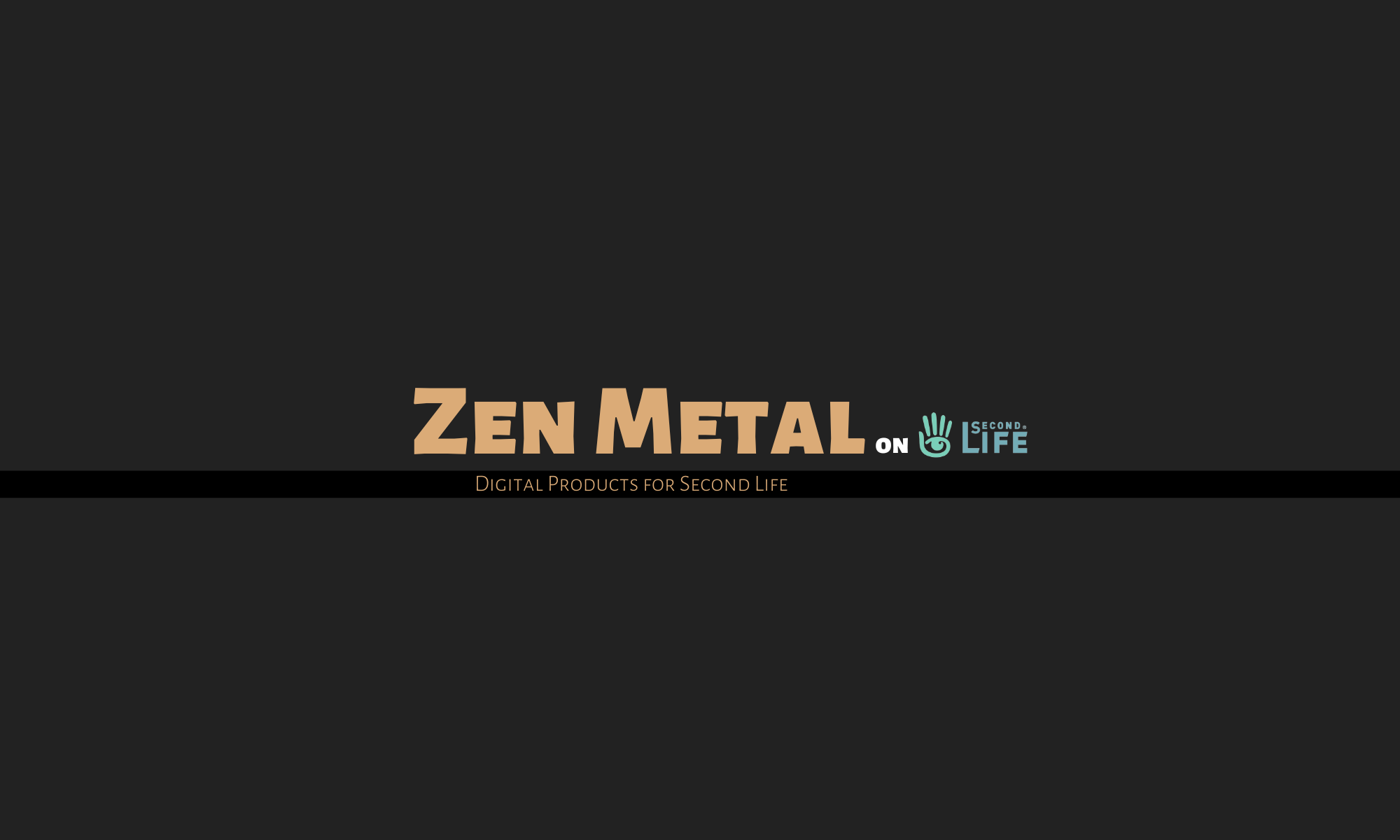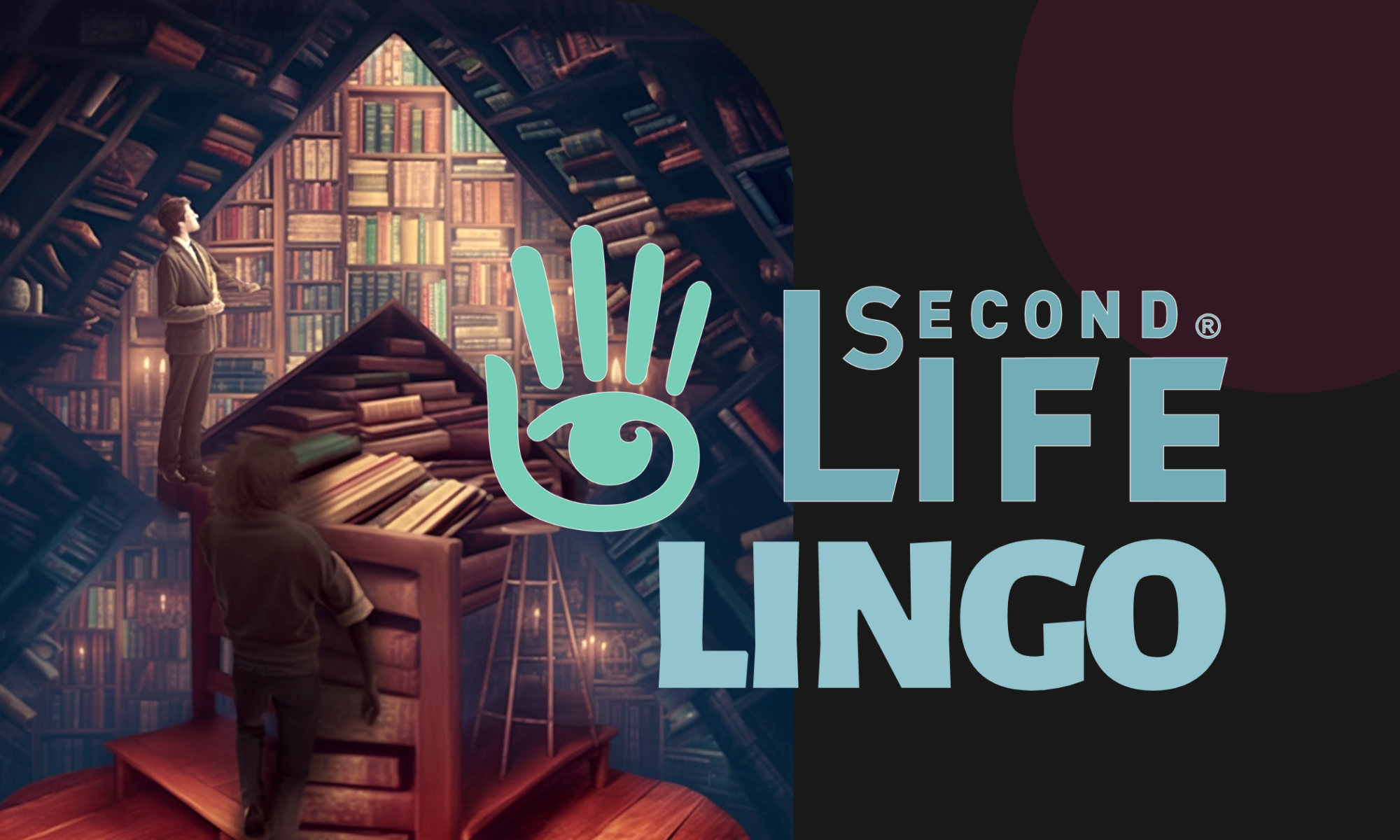Second Life is a complex place with a complex vocabulary. Knowing some of the most used words will give you a good start in figuring out how everything works. Some of this is pretty easy to pick up, but there are some advanced terms on the list:
SIMulator = 3D website, effectively (more below)
TOUCH = click
LANDMARK = Link
TELEPORT, teleporters
A teleporter will move you to a new location as the name suggests. You can teleport in various ways across SL.
INVENTORY ![]() and OUTFITS folder
and OUTFITS folder
The Inventory (suitcase) holds all of your items. The Outfits folder is for saving your currently worn items (HUDs included) as an outfit.
HUD = Heads Up Display
In SL, it refers specifically to user-created display control panels.
HUDs are most commonly used as unpackers and texture changers for outfits and furniture. Therefore, if anything you buy on Second Life has a HUD, it means there are options and controls to it.
LANDING POINT or LANDING AREA
Each sim usually has a set, designated landing point in their landing area, kind of like a website home page where they orient you to the purpose of the sim’s existence. You can teleport to this location if it is set when you land on a new land. You touch the “land” toolbar button, go to “options,” and from “landing point,” touch “teleport.” This way, you’ll always return to the current sim’s landing point.
AVATAR – AVI – AGENT
Avatar, or avi for short, is the character you play with. You, the human, are the AGENT of that avatar. In practice, nobody but Linden Labs and scripters uses the term “agent,” but it’s good to know what it refers to when they use it.
WEAR – ATTACH – ADD
There are 3 different ways to ‘wear’ an item on your avatar. “Wear” is a troublesome one and normally not needed. It works with system avatar body parts and “system layers” only, but is just not needed anymore. In addition, if you “wear” an item that has an attachment point in your right hand (which you won’t know until it’s too late) you’ll detach everything else, like your top or pants, that have also been attached to your right hand, which is the default attachment point but with “wear” you can only wear one item at a time, and it detaches everything else. This function can have its uses, but for the time being, just don’t use it.
Instead, use “add” for everything. It will always attach things wherever they are set to go, and can be used to add multiple items in the same attachment point.
Attach comes in handy when you want to CHANGE the attachment point of an item, for instance, to stop a top from detaching, you might want to attach it to any other attachment point except the right hand. RIGGED items, like most clothes, can be attached to any attachment point, and they’ll work fine. Unrigged items need the specific attachment point.
Detach works for all objects, but you have to “take off” system layers. You can also right click a folder and choose add to/remove from outfit for all items in the folder.
All this will become a second nature sooner or later. 🙂
MAINLAND – CONTINENTS – PRIVATE ISLAND
MAINLAND refers to any of the shared land masses or CONTINENTS that you can buy little parcels of land off for your private use. PRIVATE ISLANDS are separate areas that are paid monthly by individuals or groups to build on. The mainland is (un)managed by Linden Labs and the area has far fewer rules for the land owner (none) than private islands do if you rent land from a private island.
Private islands are managed by the owner of the Estate or Sim owner, which basically means that if you don’t know the sim owner or their reputation, you don’t necessarily know what you’re buying into.
Whether this is a negative or positive for you is a matter of opinion.
You will also be able to live on ZEN METAL land, just teleport to the ZEN METAL real estate office.
SIM – REGION – PARCEL
A sim refers to the location you’re on, but it is technically a private, complete “sim,” short for ‘simulator.’ A region is a sim-size square on one of the mainland continents, and a parcel is usually a single individual or group-owned piece of land on the mainland or a rented piece on a private island. You can also divide any land you own into parcels but usually can’t do this on rented land.
Rent or buy, you’ll pay for the use of land one way or another on a weekly or monthly basis, and Linden Labs always get their money regardless. Considering Linden Labs basically gives away “free” land to big land owners, they can rent out land cheaper than what it costs to own land. (Complicated, but we’re still talking relatively small dollar amounts.)
PRIM- OBJECT – LAND IMPACT
A primitive, a prim for short, is one of the default mesh objects that you can create yourself right on Second Life, as opposed to mesh objects you create with another program and import to Second Life, or that have been imported by another user of course.
Land Impact is the unit for server weight. One prim = one Land Impact, or LI for short. Mesh objects can be ONE object but still have a larger land impact than one, but in reverse, one mesh object can consist of several prim-like items that weigh less than the same object created in-world out of prims.
Prims are considered “heavy” and mesh objects “light.”
VIEWER – FIRESTORM AND SECOND LIFE VIEWER
The viewer is to Second Life what a browser is to the Internet. The Second Life viewer is the default (like Edge, Internet Explorer, or Safari), and then there are plenty of other viewers out there, the most popular of which is the Firestorm viewer.
While Firestorm is a good all-rounder, gamers and SL photographers may prefer other viewers. A relatively new viewer the Alchemy Viewer maybe a great option if your laptop struggles with full graphic displays.
“A Second Life Viewer” is essentially a 3D browser of 3D Internet, if you will.
REZZING
Refers to making an object (or avatar) appear in 3D when pulled from the inventory to the ground or created from the build-tool box.
To rezz, you need to be on land on which you have building (rezzing) rights. You can always go to ZEN METAL Sandbox for it.
SANDBOX
Public sandboxes are places where you are allowed to Rezz objects and build without knowing the place’s owner. We have our own here.
ANIMATION OVERRIDE (AO)
An animation override, to me, is of the most important aspects of a great avatar. You can make or break an avatar by its animation overrides. It gives your avatar its character.
I would put a lot of emphasis on good animation overrides even before anything else. (They’re much cheaper and achieve much more than perfect mesh or clothes. No matter how good your avatar looks, the dorky default animations will make it look bad 100% of the time.)
Official glossary of terms
If you want even more lingo, there’s an official glossary of terms in Second Life Wiki. (“Playing Second Life quickly becomes another full-time job. :D)


